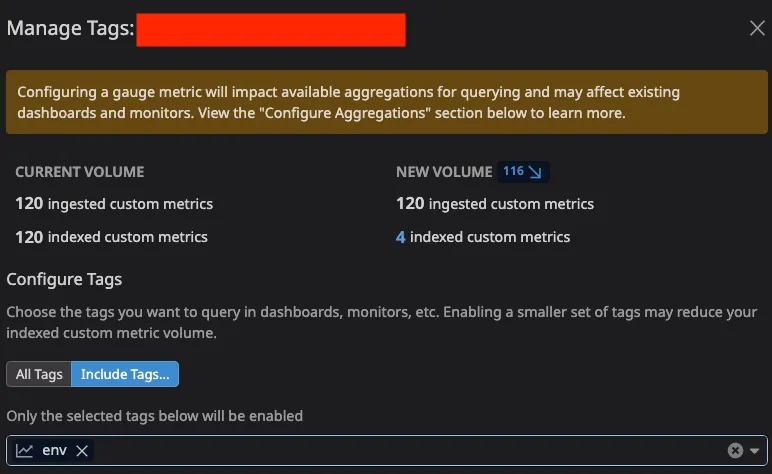By xing du.apr 17, 2023
This week at work I discovered that I had recorded that day that I had desired for a long time: “Statistics without a limit.”
Problem with metrics tagging
One of the important characteristics of DatiDag is statistics. It is one of the three types of telemetry data and is the most difficult balance between granularity and costs. For adapted statistics (the premium type that is invoiced): tags offer dimensions to filter and collect statistics, but it becomes quickly expensive.
The number Unique Custom statistics are remembered O’clock and have been agreed (Average in this case) over to full calendar month to be used as the volume for invoicing, and Unique is defined as “per tag combination“
For example, if you need to be called http.server.request.count And it has one host tag and one env Tag the application (metric emitter) lives on 3 Different hosts and 2 Different environments; Then, you will end 2 * 3 = 6 Custom statistics for billing purposes.
With metric creation (and making tagging) fully powered by the client side (applications and dd-agent), This gives applications the full electricity to decide what their will look like on a date backend. Unfortunately, the application developers do not always know how the invoicing of the custom metrics of DataTag works, and they may not be the people who pay the accounts for data day.
If a change has added a tag with high cardinality to an existing metric, there is a good chance that this will only be noted so much, if not months. Identifying and correction of the source is always the best solution to stop this abuse. Yet this approach with legacy services in the image and subtimes unclear ownership may not be that easy.
At the end of the day there is no way for a data day account manager to “filter” adapted statistics and/or tags that are used for adapted statistics. And this is where “statistics without limits” come to help.
Solution with “statistics without limits”
Statistics without restrictions split adapted statistics in “Inatted statistics“And”Indexed statistics “allow per meter Configuration to refine and optimize your tags and agreements.
As the name SUG Forest, “inatted statistics” is the original volume adjusted statistics that are sent with code. ‘Indexed Metrieken’, on the other hand, refers to Quterables in Datidagbase on statistics without limit configurations. When it comes to invoicing, “taken volume” and “indexed volume” They are invoiced at different rates.
I can k The rate for “taken” is 2% of the costs of the rate for “indexed” (Before “statistics without limits” all metrics taken are indexed and his prince at the indexed pace).
Use an example to walk through the difference:
My metric use is 10000 a month from a single metric. Before I apply “statistics without borders” configurations, my invoice is $ 500 ($ 5 per 100). By applying “statistics without limits”, I reduced the “indexed volume” from 10000 to 400: 10000 volume taken and 400 indexed volume. This gives me 10000 * $ 0.1/100 + 400 * $ 5/100 = $ 30
How to start
Onion
Go to “Summary” Summary “and choose the statistics of your interest. Expand the page Details and click on” Manage Tags “or use the Quick Navigation Right button.


You can then configure via the interactive user interface:

Use of the terrift
Usage datadog_metric_tag_configuration Source.
Space to improve
This is a position that I will have held since 2017 and the current version is still going on these iterations.
- “Including tags” is not like “exclude tags”. From the end of a user I was considered to configure this if one or a few tags have high cardinality and I want to exclude it from a lower invoice.
Result
I was able to reduce the use of SOM adapted statistics that I am not to identify the source/origin:

The original article published on medium.





